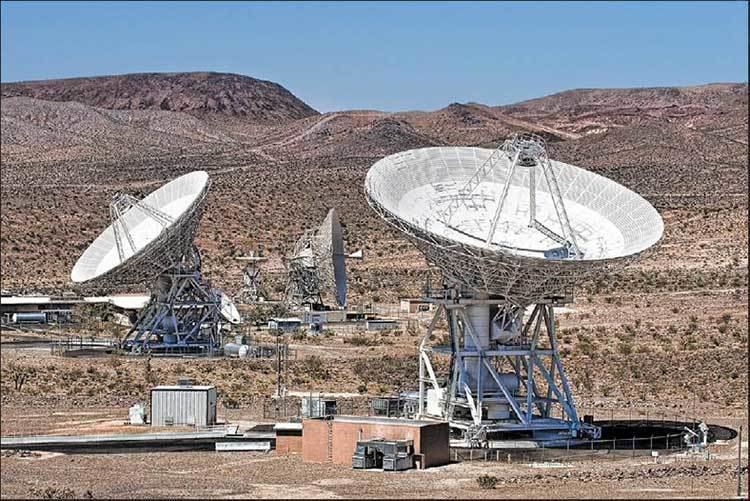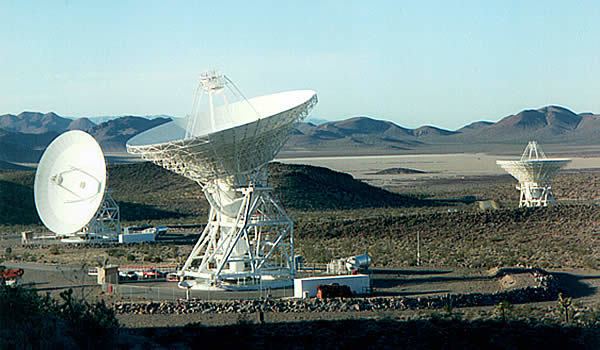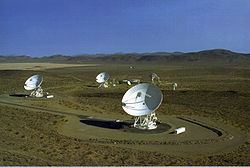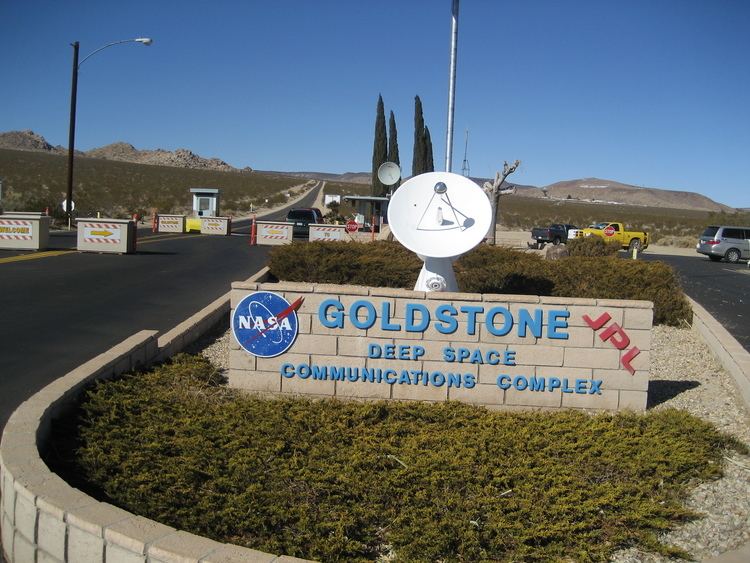Code 252, 253, 257 Altitude 899 m | Established 1958 Opened 1958 Added to NRHP 3 October 1985 | |
 | ||
Organization National Aeronautics and Space Administration, Jet Propulsion Laboratory, California Institute of Technology Similar Madrid Deep Space Co, Canberra Deep Space Co, Goldstone Solar System R, Space Flight Operation, Arecibo Observatory | ||
Nasa goldstone deep space communications complex july 4 1969
The Goldstone Deep Space Communications Complex (GDSCC), commonly called the Goldstone Observatory, is located in the Mojave Desert near Barstow in the U.S. state of California. Operated by the US National Aeronautics and Space Administration's Jet Propulsion Laboratory, its main purpose is to track and communicate with space missions. It is named after Goldstone, California, a nearby gold-mining ghost town.
Contents
- Nasa goldstone deep space communications complex july 4 1969
- Goldstone deep space communications complex open air museum
- Antennas
- Goldstone has the bird
- Complex tours
- In popular culture
- References

The complex includes the Pioneer Deep Space Station, which is a U.S. National Historic Landmark. The current communications complex is one of three in the NASA Deep Space Network, the others being the Madrid Deep Space Communications Complex and the Canberra Deep Space Communication Complex.

Goldstone deep space communications complex open air museum
Antennas

Five large parabolic ("dish") antennas are located at the Goldstone site to handle the workload, since at any given time the DSN is responsible for maintaining communication with up to 30 spacecraft. The antennas function similarly to a home satellite dish. However, since the spacecraft they communicate with are much further away than the communication satellites which home satellite dishes use, the signals received are much weaker, requiring a larger aperture antenna to gather enough radio energy to make them intelligible. The largest, a 70-meter (230 ft) Cassegrain antenna, is used for communication with space missions to the outer planets, such as the Voyager spacecraft, at 20 billion kilometers the most distant manmade object from Earth. The radio frequencies used for spacecraft communication are in the microwave part of the radio spectrum; S band (2.29 - 2.30 GHz), X band (8.40 - 8.50 GHz) and the Ka band (31.8 - 32.3 GHz). In addition to receiving radio signals from the spacecraft (called downlink signals), the antennas transmit commands to the spacecraft (called uplink signals) with high power radio transmitters powered by klystron tubes.
A major goal in the design of the station is to reduce interference with the weak incoming downlink radio signals by natural and manmade radio noise. The remote Mojave Desert location was chosen because it is far from manmade sources of radio noise such as motor vehicles. The RF front ends of the radio receivers at the dishes use ruby masers, consisting of a bar of synthetic ruby cooled by liquid helium to 4.5 K to minimize the noise introduced by the electronics.

When not needed for spacecraft communication, the Goldstone antennas are used as sensitive radio telescopes for astronomical research, such as mapping quasars and other celestial radio sources; radar mapping planets, the Moon, comets and asteroids; spotting comets and asteroids with the potential to strike Earth; and the search for ultra-high energy neutrino interactions in the Moon by using large-aperture radio antennas.
"Goldstone has the bird"

It is commonly believed that the first American satellite, Explorer 1, was confirmed to be in orbit by the use of the phrase "Goldstone has the bird". However, Goldstone was not in operation at the time of Explorer 1, and like many oft-repeated quotations it is incorrect. Others claim that the actual phrase was "Gold has it!", incorrectly identifying "Gold" as a temporary tracking station at Earthquake Valley, east of Julian, California. In fact, Gold Station was located at the Air Force Missile Test Center (AFMTC) in Florida and the temporary tracking station at Earthquake Valley was Red Station.
Complex tours
The Goldstone Deep Space Communications Complex conducts tours of its facility and museum to middle and high schools, as well as individuals interested in visiting.
In popular culture
The DSS 14, "Mars" telescope is specifically quoted in the webcomic Wondermark, episode 881 "In which a Standard is Questioned".
